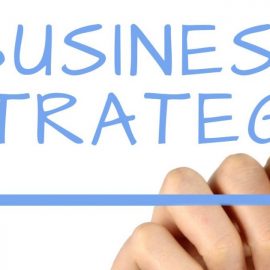

This article is an excerpt from the Shortform book guide to "The Personal MBA" by Josh Kaufman. Shortform has the world's best summaries and analyses of books you should be reading.
Like this article? Sign up for a free trial here .
How do businesses encourage people to hand over their money before they lose interest? What can you do to persuade a customer to buy your product/service, and not the competitors’?
Unless your product/service is one-of-a-kind, it will compete with other offers that aim to address the same needs. That’s why you need to think about how to persuade a customer to buy your solution, and not the competitors’.
In this article, we’ll discuss customer persuasion tactics businesses use to drive sales. Then, we’ll discuss different strategies for determining your prices.
Customers Feel No Sense of Urgency to Hand Over Their Money
Once a business has caught the attention of potential customers, it’s in their interest to complete transactions as quickly as possible. Otherwise, short attention spans coupled with the desire to keep options open influence these people to drift away. However, while businesses want to make sales as quickly as possible, Kaufman argues that customers don’t feel this same sense of urgency. They often have a range of alternatives to explore and want to take time to ensure they’re getting the best value for their money.
(Shortform note: Research clarifies why people prefer to keep their options open instead of completing transactions. Browsing for products online or window shopping involves anticipating what it would be like to have all of these different things in your life. This process releases dopamine (the hormone that makes you feel good) into your bloodstream and increases your desire to seek out even more things that make you feel good. However, this dopamine hit stops the moment you stop imagining multiple possibilities and commit to one possibility. In other words, it feels more pleasurable to think about buying things than to actually buy them.)
In his book The Personal MBA, Kaufman explains how to persuade a customer to buy your solution, and not your competitor’s. He proposes two methods:
- First, they incorporate limitations into their offer—either by limiting the availability of the product or service or setting an expiration date on a discounted price. These tactics make offers appear more valuable by suggesting that potential customers will “lose out” if they don’t immediately hand over their money.
- Second, businesses offer money-back guarantees to establish trust and alleviate remaining concerns about whether or not the offer is worth paying for.
(Shortform note: As an online shopper, you’ve probably noticed and fallen prey to three additional tactics employed by businesses seeking immediate transactions: using words that imply urgency, such as “subject to stock,” simplifying the purchasing process to make it as easy as possible—for example, Amazon’s “buy with 1-click” button, and suggesting that you can pay in installments—which makes their offer appear more affordable.)
How to Price Your Offer
When pricing offers, businesses need to strike a balance between providing a fair price to customers and making a profit. Kaufman suggests four different ways to achieve this balance and determine the price of your offer:
Manufacturing cost + profit: Work out how much your offer costs to produce and add on how much profit you want to make per sale. For example, your product costs $20 to create and you want to make a 10 percent profit for every sale so you set the price as $22 ($20 + 10%).
Comparative pricing: Work out the average price that offers similar to yours are selling for and set your price accordingly. Setting a lower than average price attracts more customers but it may also signal that your product or service doesn’t offer as many benefits as what’s currently on the market. Alternatively, setting a higher than average price signals that you’re offering something superior to what’s currently on the market. This approach attracts fewer customers but results in more profit per sale.
Price based on long-term value: If you’re selling an asset that will produce ongoing income for your purchaser, set the price according to how much you expect this asset to earn over a set period of time. For example, you’re selling a franchise and expect it to earn $3,000 a month over a period of 10 years. You set your asking price for $360,000 ($3,000 x 12 months x 10 years).
Price based on subjective value: People value products and services in different ways depending on their specific requirements and how beneficial the offer appears to be—the more an offer appears to meet their specific needs, the more people are willing to pay. Determining how much your offer is worth to the people who value it the most will allow you to set higher prices. For example, a seasoned marathon runner will value high-grade running shoes more than someone who only goes for occasional runs.

———End of Preview———
Like what you just read? Read the rest of the world's best book summary and analysis of Josh Kaufman's "The Personal MBA" at Shortform .
Here's what you'll find in our full The Personal MBA summary :
- A comprehensive overview of how businesses work
- The five key processes that underpin every business
- How to identify profitable opportunities to ensure business success






